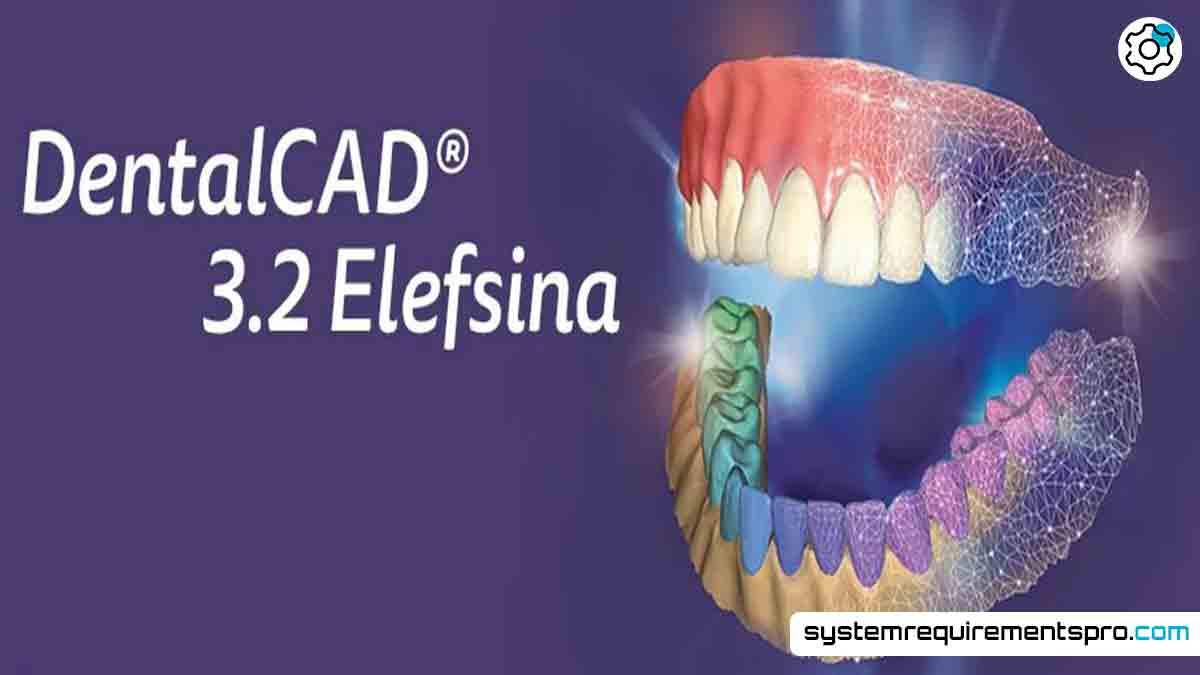In the quick-paced field of digital dentistry, accuracy and efficiency are non-negotiable. The Exocad Dental CAD program helps dental professionals create excellent results, whether they are designing crowns, bridges, or orthodontic appliances. But your workstation needs to satisfy the Exocad Dental CAD System Requirements if it is to fully realize its potential. Ignoring these specs could cause laggy processes, error generation, or perhaps software crashes. This guide provides optimization advice, breaks out the minimum and recommended setups, and addresses often asked questions to enable you to create a system that reflects your originality.
Exocad Dental CAD Minimum System Requirements
Make sure your system satisfies the baseline requirements before starting Exocad. Although they are designed for simpler tasks and smaller projects, these requirements allow the software to function.
Minimum Requirements
- Operating System: Windows 10 (64-bit) or Windows 11.
- Processor: Intel Core i5 or AMD equivalent (4th generation or newer).
- RAM: 8 GB (16 GB for smoother multitasking).
- Graphics Card: Dedicated GPU with 2 GB VRAM (NVIDIA GeForce GTX 1050 or AMD Radeon RX 560).
- Storage: 500 GB HDD (SSD preferred for faster data access).
- Display: 1920×1080 resolution with 24-bit color depth.
- Peripherals: 3-button mouse and internet connection for activation/updates.
Although these specs address basic designs, complicated cases, including full-arch restoration,s could tax the system.
Exocad Dental CAD Recommended System Requirements
Aim for the recommended configuration for flawless performance with big datasets, 3D modeling, and multi-layered workflows:
Recommended Requirements
- Operating System: Windows 11 (64-bit) for optimal compatibility.
- Processor: Intel Core i7/i9 or AMD Ryzen 7/9 (8th generation or newer).
- RAM: 32 GB (supports simultaneous use of Exocad with other applications).
- Graphics Card: NVIDIA Quadro RTX 4000 or AMD Radeon Pro W5700 (8 GB VRAM or higher).
- Storage: 1 TB NVMe SSD (prioritizes quick file access and reduces load times).
- Display: 3840×2160 (4K) monitor with 100% sRGB color accuracy.
- Peripherals: SpaceMouse for 3D navigation and a high-DPI mouse for precision.
This arrangement minimizes lag during demanding operations like dynamic occlusion checks and guarantees smooth rendering of detailed models.
Exocad Dental CAD System Requirements PC: Minimum vs Recommended
Your workload will determine either the minimum or recommended specs. Higher-end hardware will help labs handling 20+ unit cases or orthodontic aligners, even if casual users designing single crowns may manage with the baseline. The following is a quick comparison:
| Component | Minimum Requirements | Recommended Requirements |
|---|---|---|
| OS Requirements | Windows 10 | Windows 11 |
| Processor Requirements | Intel Core i5 / AMD equivalent | Intel Core i7/i9 / AMD Ryzen 7/9 |
| RAM Requirements | 8 GB (16 GB ideal) | 32 GB |
| Graphics Card Requirements | NVIDIA GTX 1050 / AMD RX 560 | NVIDIA Quadro RTX 4000 / AMD Pro W5700 |
| Storage Requirements | 500 GB HDD | 1 TB NVMe SSD |
| Display Requirements | 1920×1080 | 3840×2160 (4K) |
Particularly as Exocad releases updates with advanced features, investing in the recommended specs future-proofs your setup.
Optimization Tips for the Exocad Dental CAD Software
Even with good hardware, fine-tuning can help:
- Update Drivers: Make sure your GPU and chipset drivers are up to date to avoid compatibility issues.
- Use SSDs: Store your project files and the software itself on an SSD to speed up loading times.
- Close Background Apps: Disable unnecessary programs (e.g., browsers, streaming services) to free up RAM.
- Adjust Display Settings: Lowering the resolution during editing can reduce GPU load.
- Use a Cooling Pad: Prevent thermal throttling on laptops during long sessions.
For labs with Exocad on multiple workstations, consider a central server to manage large files.
Conclusion
Maintaining production and delivering exact dental restorations depend on an awareness of the Exocad Dental CAD System Requirements. The recommended configuration makes sure you’re prepared to handle challenging cases without compromising, while the minimum specs offer a starting point. Staying proactive with system maintenance and optimizing your hardware will help you to produce a flawless digital workflow fit for modern dentistry.
Frequently Asked Questions
Can I run Exocad on a Mac?
Yes, but only via Boot Camp or virtualization software like Parallels. Windows is the officially supported OS.
Is a gaming GPU enough for Exocad?
Gaming GPUs work, but professional cards (e.g., NVIDIA Quadro) are more stable for CAD.
How often does Exocad update its system requirements?
Requirements change with major software updates. Check Exocad’s website annually for changes.
Will upgrading RAM help?
Yes, especially when working with large scans or multiple modules open at the same time.
Can I use Exocad on a laptop?
Yes—choose a workstation laptop with a dedicated GPU and good cooling.
We hope that you have found the answer to the system requirements for Exocad Dental CAD. Follow System Requirements Pro for more such updates, and bookmark this page to get the latest updates on the system requirements for Exocad Dental CAD.

